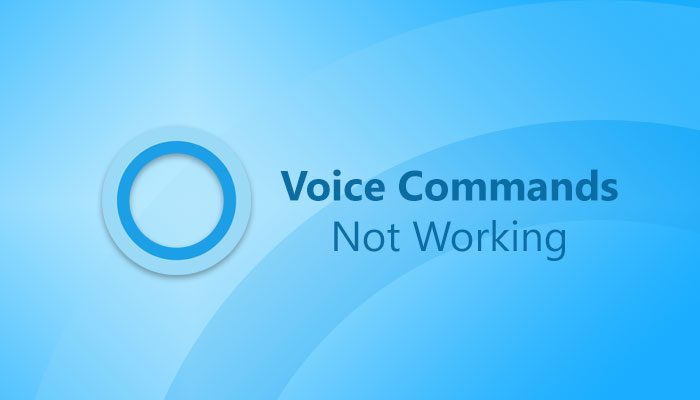Cortana voice commands not working on Windows 11/10
If Cortana voice commands are not working on Windows 11 or Windows 10, follow these suggestions to resolve the issue: While we may have shown and talked about Windows 11, a similar process needs to be followed for Windows 10.
1] Check Voice activation settings
It is the first thing you need to check when you cannot use the voice commands with Cortana on your Windows 11 computer. At times, incorrect or missing permission can cause this issue on PC. Voice action setting helps you allow or prevent apps from accessing voice activation services. For example, if you need to use an app with voice commands, you need to run this process in the background. Follow the following steps to verify the Voice activation settings in Windows 11:
Press Win+I to open Windows Settings.Go to Privacy & security tab on the left side.Click on the Voice activation menu on the right side.Make sure the Microphone setting is set to On.Toggle the Let apps access voice activation services to turn it ON.Toggle the Cortana button from under the Apps that have requested voice activation access heading to turn it ON.
After that, restart the Cortana app and check if it resolves the issue or not.
2] Check Microphone settings
After the Voice activation setting, you must check the Microphone’s permission. For obvious reasons, Cortana requires microphone’s permission to allow users to use voice commands. If you haven’t permitted Cortana from accessing the Microphone on your computer, you cannot use the voice commands. Therefore, follow the following steps to verify the Microphone permission settings:
Open Windows Settings on your computer.Switch to the Privacy & security tab on the left side.Find out and click on the Microphone setting on the right side.Toggle the Microphone access button to turn it ON.Toggle the Let apps access your microphone button to enable it.Ensure that Cortana button is turned ON.
Next, close the window, restart Cortana, and check if the issue remains on your PC or not. If yes, follow the other solutions mentioned below.
3] Run Windows Store Apps Troubleshooter
If the permission-related solutions are not working, you might want to run the Windows Store Apps Troubleshooter on your computer. As Cortana is a Microsoft Store app, you can run the corresponding troubleshooter to fix common issues like this one. To run Windows Store Apps Troubleshooter on Windows 11, follow these steps:
Press Win+I to open Windows Settings.Ensure that you are in the System tab.Click on the Troubleshoot menu on the right side.Select the Other troubleshooters option.Find the Windows Store Apps Troubleshooter.Click the Run button.Follow the screen instructions to get it done.
Once done, you need to restart your computer. Following that, you might not find the problem anymore.
4] Repair and reset Cortana
It is a very common solution among apps. When an app is having some issues, repairing or resetting might fix them immediately. You can do the same with Cortana. For that, do the following:
Press Win+I to open Windows Settings.Go to the Apps section.Click on the Apps & features menu.Find out Cortana from the list.Click the three-dotted button and select the Advanced options.Click the Repair button to repair the app.Check if the problem remains or not.If yes, click the Reset button.
After that, you should not get the same issue again.
5] Reinstall Cortana
It is probably the last thing you can try. It is possible to uninstall and reinstall Cortana using Windows PowerShell or Windows Terminal. You can follow this detailed guide to know how you can uninstall and reinstall Cortana.
How do I activate Cortana by voice?
To activate Cortana by voice, you need to say Hey Cortana. It is the voice command you can use to get anything done by Cortana, the digital assistant on Windows 11. Whether you need to send an email or do something else, you can activate Cortana by saying the aforementioned command. Hope this guide helped you fix the issue with Cortana’s voice commands in Windows 11. Read: How to Speak or Type into Cortana in Windows.

